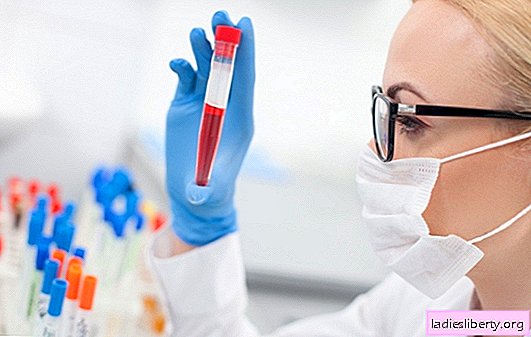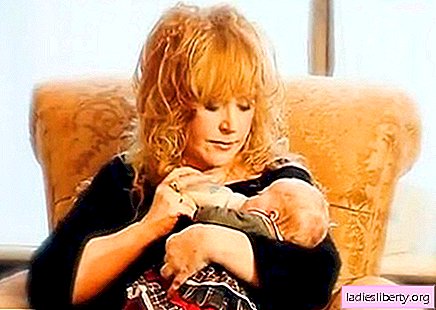
So called diseases caused by nematodes of the family Ancylostomatidae. Two representatives of this family are parasitic in humans - hookworm (Arcylostoma duodenale), which causes a disease called hookworm, and Necator (Necator americanus), which causes necatorosis.
The size of the parasites ranges from 5 to 18 mm. Both helminths, whose morphological structure is different, are similar in biology and pathogenicity. The hookworm oral capsule is equipped with chitin cutting teeth, and in the necator, with cutting plates. Males differ in the structure of the tail end, and females in the location of the vulva.
The eggs of hookworms and nekator are practically indistinguishable by external structure. In adulthood, parasites are localized in a person in the duodenum and upper part of the small intestine, firmly fixed to the mucous membrane of their walls. Eggs secreted with stool outside, under favorable conditions, mature within 1-2 days to the stage of larvae that leave the eggs and live for some time in the soil.
Developing and undergoing several molts, the larvae become invasive. They are capable of movement and can penetrate the soil to a depth of almost one meter and also to climb the wet grass, its branches and stems, to a height of up to 15-20 cm. Invasive larvae actively penetrate deep into the tissues through intact human skin.
Penetration occurs most often through the skin of the legs when walking without shoes, as well as through the skin of other parts of the body when lying on the ground. Once in the tissues, the larvae enter the blood vessels and passively move with the blood. Being entered into the capillaries of the lungs, they penetrate through their wall into the alveoli.
Atrial epithelium of the respiratory tract drives them from the small bronchi up to the larger ones, then along the trachea and larynx; Once in the throat and mouth, the larvae can be swallowed; having reached the intestines, they are attached to the mucosa of its wall and begin to grow. After 4-5 weeks from the time of infection, the larvae grow in adult sexually mature parasites. From this moment, egg laying begins.
Infection is also possible through the mouth with food contaminated with hookworm larvae. In this case, they do not migrate, but, once in the intestine, they can directly develop in it in adults. Necator larvae migrate with both methods of penetration into the body. The life expectancy of hookworms and nekator is about 5 years.
Epidemiology
Hookworm infections are common in the tropics and subtropics, where there are favorable conditions for humidity and temperature for the development of eggs and larvae in the environment.
The development of hookworms can occur in temperate and even cold climates, but not on the surface of the soil, but deep underground, in wet mines, where the temperature is kept at around 18 ° and above year-round.
Pathogenesis and Clinic
The pathogenesis and clinic are different during the period of migration and during the stay of adult parasites in the intestine. The introduction of larvae into the skin can cause redness and itching. In addition, in persons who are re-infected, an allergic reaction with the same phenomena or with the phenomenon of edema, rash can be observed. These symptoms often go unnoticed. The migration of larvae into the lungs is accompanied by point, and sometimes more severe hemorrhages. It is also possible the development of bronchitis and even bronchopneumonia.
Adult hookworms, attaching to the walls of the intestine, disrupt the integrity of the mucosa and feed on blood. They secrete a special secret that prevents blood coagulation, which can cause prolonged bleeding from damaged areas of the mucosa. Being able to move, parasites usually damage the mucous membrane in many places.
The process is aggravated by the possibility of penetration of microbial flora and the appearance of inflammatory changes. All this leads to a violation of the gastrointestinal tract. There are pain in the intestines, impaired stool, appetite, patients are concerned about nausea and vomiting. Loss of blood leads to depletion of iron, protein, vitamins, mainly A, D and complex B, and to the development of anemia and even cachexia.
In children with reduced nutrition, especially when eating food that is poor in protein and iron, the disease takes a severe form, affecting their mental and physical development. It proceeds more heavily with prolonged and intensive invasion. In these cases, in addition to violations from the gastrointestinal tract, in children there is general weakness, easy fatigability, shortness of breath.
They become lethargic, lethargic. The skin becomes edematous, pale with a waxy hue, the mucous membranes are also very pale. There are nosebleeds, perversion of appetite - the need is chalk, clay, etc. There are other signs of severe iron deficiency anemia - koilonychia, achilic esophagitis.
Systolic murmur is heard in the region of the heart, anemic - on the bulb of the jugular vein. With prolonged anemia, symptoms of dystrophy of the heart muscle develop. In the blood of patients, changes characteristic of hypochromic anemia are observed: a decrease in hemoglobin, sometimes up to 10% with a small number of red blood cells (below 1 million) and a low color index. The number of eosinophils is almost constantly increased - on average, from 10 to 20%.
Diagnosis
The diagnosis of hookworm infections can be accurately made based on the presence of eggs in excrement. Eggs can also be easily found in the contents of the duodenum with duodenal sounding. The latter method is more accurate and useful in doubtful cases.
Treatment
Treatment of hookworm infections is carried out with naftamone, combantrine or levamisole. In severe anemia, iron preparations are indicated, as well as transfusion of red blood cells. Treatment continues for 3 days. Efficiency is about 80%.
Prevention
Prevention comes down to protecting the environment from contamination by feces and to use exclusively fertilized feces to fertilize the land. In addition, it is necessary to identify and treat all individuals invaded by hookworms.
For personal prevention, in the foci of hookworm infections, you should not allow children to walk barefoot, lie and sit on uncovered ground. Raw vegetables and fruits should be washed thoroughly and immersed in boiling water for about one minute.











